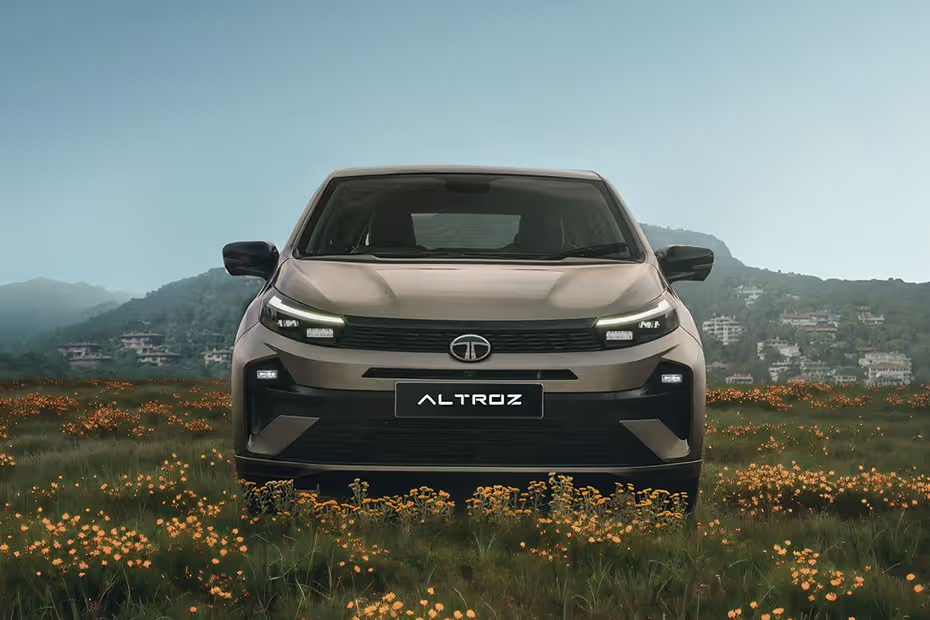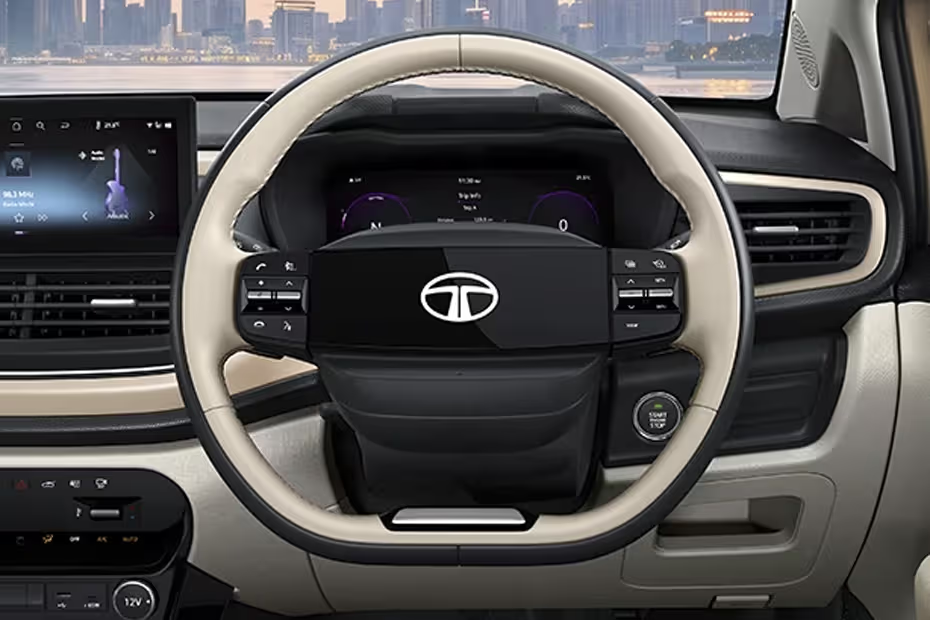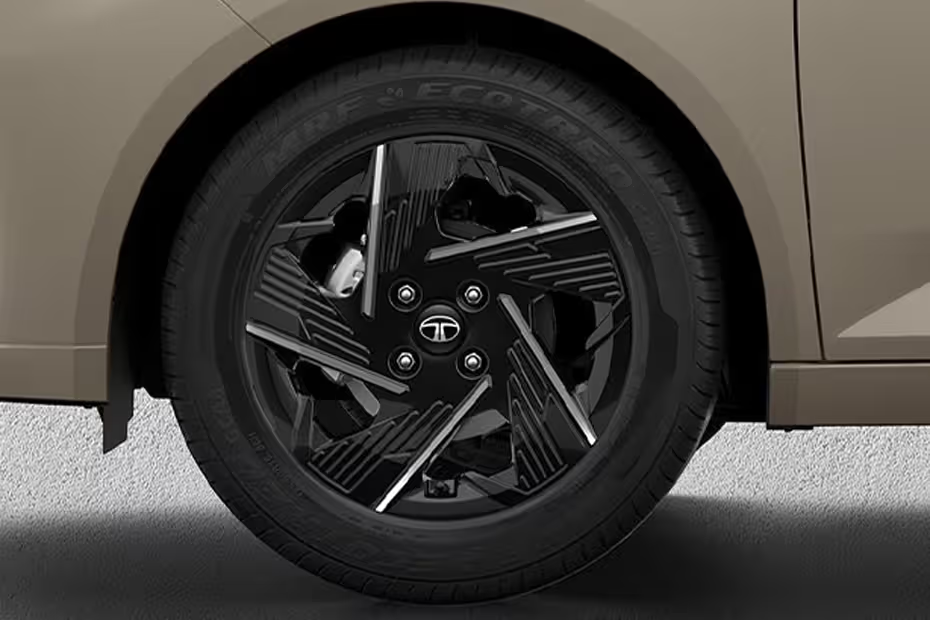India’s premium hatchback segment is witnessing its fiercest battle yet with the 2025 Tata Altroz facelift challenging the dominant Maruti Baleno. As urban buyers demand style, safety, and sophistication in compact packages, these two contenders offer radically different philosophies. The Baleno leads sales charts with proven reliability and refined 4-cylinder engines, while the Altroz counters with 5-star safety DNA and segment-first features. Having analyzed technical specifications, ownership costs, and real-world performance, this 3,000+ word comparison reveals which hatchback deserves your ₹9 lakh investment.
1. Design & Dimensions: Style Meets Substance
Table 1: Exterior Design & Dimensional Comparison
| Parameter | 2025 Tata Altroz | 2025 Maruti Baleno | Advantage |
|---|---|---|---|
| Design Language | Bold “Impact 2.0” with tri-arrow motifs | NEXWave fluidic design with chrome accents | Altroz: More aggressive |
| Lighting | Full LED headlamps with DRLs, LED light bar | LED projectors with tri-LED DRLs | Altroz: Modern signature |
| Door Handles | Flush-fitting (front), conventional (rear) | Conventional | Altroz: Aerodynamic edge |
| Length x Width x Height | 3990 mm x 1755 mm x 1523 mm | 3990 mm x 1745 mm x 1500 mm | Altroz: Wider + taller |
| Wheelbase | 2501 mm | 2520 mm | Baleno: Longer by 19mm |
| Boot Space (Petrol) | 345 liters | 318 liters | Altroz: 27L more |
| Boot Space (CNG) | 210 liters | Not available | Altroz exclusive |
| Ground Clearance | 165 mm | 170 mm | Baleno: 5mm higher |
The Altroz’s 2025 facelift introduces a bolder stance with a gloss-black grille, revised LED headlamps featuring individual lighting elements, and a full-width LED light bar at the rear . Its flush-mounted front door handles enhance aerodynamic efficiency, though rear handles remain conventionally placed on the C-pillar—a minor design inconsistency noted by reviewers . The Baleno counters with understated elegance, featuring C-shaped LED tail lights, a roof-mounted spoiler, and 16-inch dual-tone alloy wheels on higher variants . Its 170mm ground clearance slightly edges the Altroz’s 165mm, benefiting rough-road capability .
Material Quality Insights:
- Altroz: Uses soft-touch dashboard materials but exhibits inconsistent panel gaps in lower trims; tail lamp brightness irregularities reported in early units
- Baleno: Features leatherette-wrapped touchpoints but uses harder plastics on lower dashboard sections; steering wheel controls feel less premium

2. Interior, Features & Comfort: Tech War Escalates
Table 2: Cabin Technology & Comfort Comparison
| Feature Category | 2025 Tata Altroz | 2025 Maruti Baleno | Standout |
|---|---|---|---|
| Digital Displays | 10.25″ touchscreen + 10.25″ digital cluster | 9″ touchscreen + 4.2″ MID + Head-Up Display | Altroz: Larger screens |
| Premium Features | Ventilated seats (top variant), ambient lighting, wireless charger | Tilt/telescopic steering, auto-dimming IRVM, cooled glovebox | Baleno: Practical touches |
| Connectivity | Wireless Android Auto/Apple CarPlay, 65W USB-C ports | Suzuki Connect (40+ functions), Alexa integration | Tie |
| AC System | Auto climate control with rear vents + air purifier | Auto climate control with rear vents | Altroz: Air quality edge |
| Seating Comfort | Height-adjustable driver seat (Pure+), rear center armrest | Height-adjustable driver seat (Zeta+), no rear armrest | Altroz: Rear comfort |
| Storage | 4 bottle holders + umbrella pockets | 4 bottle holders + sliding front armrest | Baleno: Flexible storage |
| Sunroof | Single-pane electric (Creative+ variants) | Not available | Altroz exclusive |
The Altroz’s redesigned cabin features a dual-tone beige-brown theme with a layered dashboard, though some testers found the layout visually cluttered . Its 10.25-inch digital cluster integrates navigation maps and blind-spot camera feeds—a segment first . However, the infotainment system occasionally lags when switching between functions, and the touch-based climate controls lack tactile feedback .
The Baleno fights back with segment-exclusive head-up display projecting speed and RPM data, reducing driver distraction . Its Suzuki Connect telematics enable remote operations (AC start, geofencing) via smartphone, though subscription costs apply after 3 years . Rear passengers suffer from the absence of a center armrest, and the middle seat is uncomfortably upright due to the protruding backrest .
Ergonomics Deep Dive:
- Altroz Driver Position: Steering wheel lacks telescopic adjustment; tall drivers (>6ft) report limited headroom with sunroof
- Baleno Driving Comfort: Tilt/telescopic steering enables ideal positioning; seats lack lateral support during cornering
See more: Everything You Need to Know About the Yezdi Adventure 2025: India’s Rugged Value Champion Evolves
3. Performance & Drivetrain: Efficiency vs Versatility
Table 3: Powertrain & Driving Dynamics Comparison
| Parameter | 2025 Tata Altroz | 2025 Maruti Baleno | Key Difference |
|---|---|---|---|
| Engine Options | 1.2L Petrol, 1.5L Diesel, 1.2L CNG | 1.2L Petrol, 1.2L CNG | Altroz: Diesel advantage |
| Petrol Power/Torque | 88 PS @ 6000 rpm / 115 Nm @ 3250 rpm | 90 PS @ 6000 rpm / 113 Nm @ 4400 rpm | Baleno: Smoother 4-cylinder |
| Transmissions | 5MT / 5AMT / 6DCT (Petrol) | 5MT / 5AMT (Petrol & CNG) | Altroz: DCT superiority |
| CNG Power/Torque | 73.5 PS / 103 Nm | 77.5 PS / 98.5 Nm | Baleno: CNG responsiveness |
| Fuel Efficiency | Petrol MT: 19.33 kmpl | Petrol MT: 22.35 kmpl | Baleno: 15% more efficient |
| Ride Quality | Firm low-speed damping, stable at high speeds | Softer suspension, wallowy at highway speeds | Altroz: Better composure |
| NVH Levels | Noticeable 3-cylinder vibrations | Refined 4-cylinder, quieter cabin | Baleno: Refinement win |
The Altroz’s Revotron 1.2L petrol suffers from typical 3-cylinder vibrations at idle, especially with AC on. Its new 5-speed AMT (₹60k over manual) is jerky under hard acceleration, though the optional 6-speed DCT (₹1.25L premium) offers seamless shifts . The 1.5L diesel delivers a strong 200Nm torque—ideal for highway driving—but lacks automatic options .
The Baleno’s K12 Dual Jet engine features 4-cylinder refinement with minimal vibrations. Its 5-speed AMT is calibrated for city driving but hesitates during quick overtakes . The Baleno S-CNG variant delivers 30.61 km/kg efficiency—India’s highest for premium hatchbacks—but sacrifices boot space completely .
Driving Dynamics Verdict:
- City Commuting: Baleno’s lighter steering (28.2 Nm effort) eases parking; Altroz’s electric steering (32.5 Nm) offers better feedback at speed
- Highway Stability: Altroz’s stiffer suspension reduces body roll; Baleno exhibits floatiness above 100 km/h
Watch full review video:
4. Safety, Pricing & Ownership: Value Decoded
Table 4: Safety, Variant Pricing & 5-Year Cost Analysis
| Aspect | 2025 Tata Altroz | 2025 Maruti Baleno | Advantage |
|---|---|---|---|
| Safety Features | 6 airbags standard, ESC, TPMS, 360° camera (top) | 6 airbags (Zeta+), ESC, HHA, 360° camera (Alpha) | Altroz: More standard kit |
| Base Price (Petrol MT) | ₹6.89 lakh (Smart) | ₹6.70 lakh (Sigma) | Baleno: ₹19k cheaper |
| Top Variant Price | ₹11.49 lakh (Accomplished+ S DCT) | ₹9.92 lakh (Alpha AMT) | Baleno: ₹1.57L cheaper |
| CNG Entry Price | ₹7.89 lakh (Smart) | ₹8.44 lakh (Delta) | Altroz: ₹55k cheaper |
| 5-Year Maintenance | ₹48,000 (Petrol) / ₹62,000 (CNG) | ₹32,000 (Petrol) / ₹41,000 (CNG) | Baleno: Lower cost |
| Resale Value (5 yrs) | 50-52% | 55-58% | Baleno: Higher retention |
| Service Network | 1,100+ workshops | 4,000+ NEXA outlets | Baleno: Wider reach |
The Altroz’s standard 6 airbags and electronic stability control build on its Global NCAP 5-star legacy . Its blind-spot monitoring (top variants) uses cameras projecting feeds to the instrument cluster—a unique but distracting implementation . The Baleno offers hill-hold assist and auto-dimming IRVM, but its base Sigma variant misses ESC and rear defogger .
Ownership Economics Breakdown:
- Fuel Costs (15,000 km/year):
- Altroz Petrol AMT: ₹5.43/km = ₹4.07 lakh over 5 years
- Baleno Petrol AMT: ₹4.92/km = ₹3.69 lakh over 5 years
- Insurance Premium: Altroz costs ₹55,041/year vs Baleno’s ₹31,002 due to higher parts prices
5. Verdict: Which Hatchback Wins Your Use Case?
Choose Tata Altroz If:
- Safety is non-negotiable: 6 airbags and ESC standard across variants
- You drive diesel: The 200Nm torque suits highway warriors
- Feature cravings: Sunroof, ventilated seats, and digital cockpit matter
- Mixed terrain driving: Higher structural rigidity and stable dynamics
Ideal Variant: Altroz Creative S AMT (₹9.65 lakh) – Balances features with AMT convenience
Choose Maruti Baleno If:
- Budget constraints: Lower entry price and cheaper maintenance
- Predominantly city use: Lighter steering and smoother AMT
- CNG dependence: Superior 30.61 km/kg efficiency
- Resale value focus: Higher demand in used market
Ideal Variant: Baleno Zeta AMT (₹8.97 lakh) – Offers 90% features of Alpha at ₹95k less
The Final Word: Evolution vs Revolution
The 2025 Tata Altroz facelift represents a quantum leap in premiumization, offering features previously unseen in the segment. Its diesel powertrain and DCT transmission provide unique driving experiences, while the standard safety suite delivers peace of mind. However, inconsistent quality control and higher maintenance costs remain pain points .
The Maruti Baleno counters with unmatched refinement, a vast service network, and superior fuel efficiency. Its 4-cylinder petrol engine feels smoother, and the Suzuki Connect ecosystem enhances convenience. Yet the absence of a sunroof and less adventurous design may deter younger buyers .
Emerging Threats: With the Hyundai i20 facelift and Honda Jazz EV due in 2026, both models face disruption. The Altroz’s modular platform gives Tata an edge in electrification, while Maruti’s hybrid tech (seen in Grand Vitara) could benefit Baleno .
For now, urban commuters prioritizing low costs should choose the Baleno, while safety-conscious families seeking premium tech will prefer the Altroz. Test drive both—but remember: the Altroz’s 5-star safety could be priceless in an emergency, while the Baleno’s resale value ensures money stays in your pocket long-term.
Tata Altroz Highlights:





See more: Tata Altroz Racer review: hot enough?
